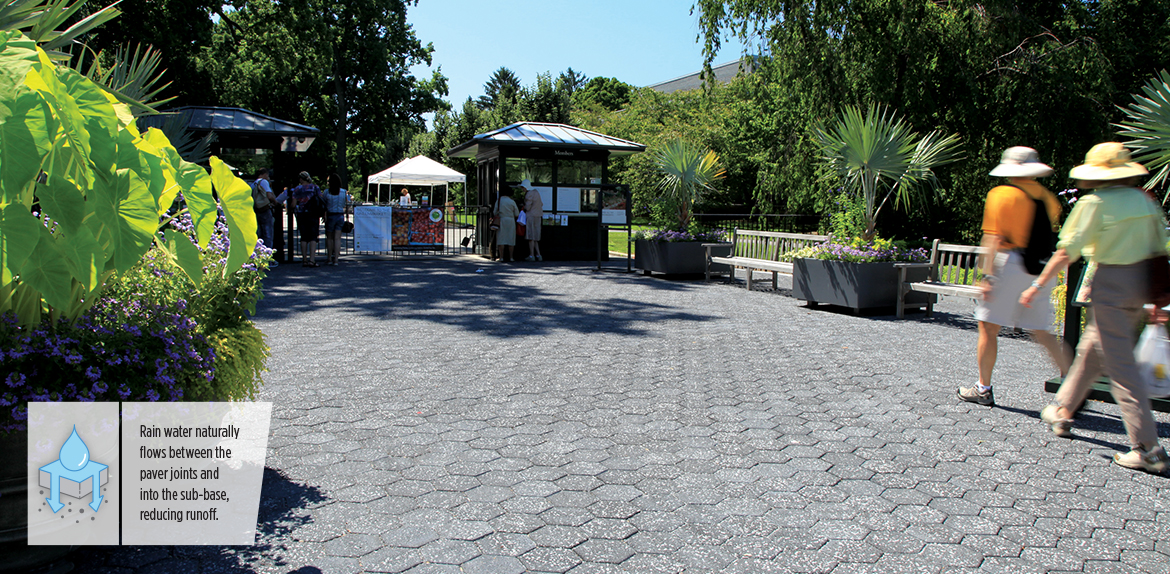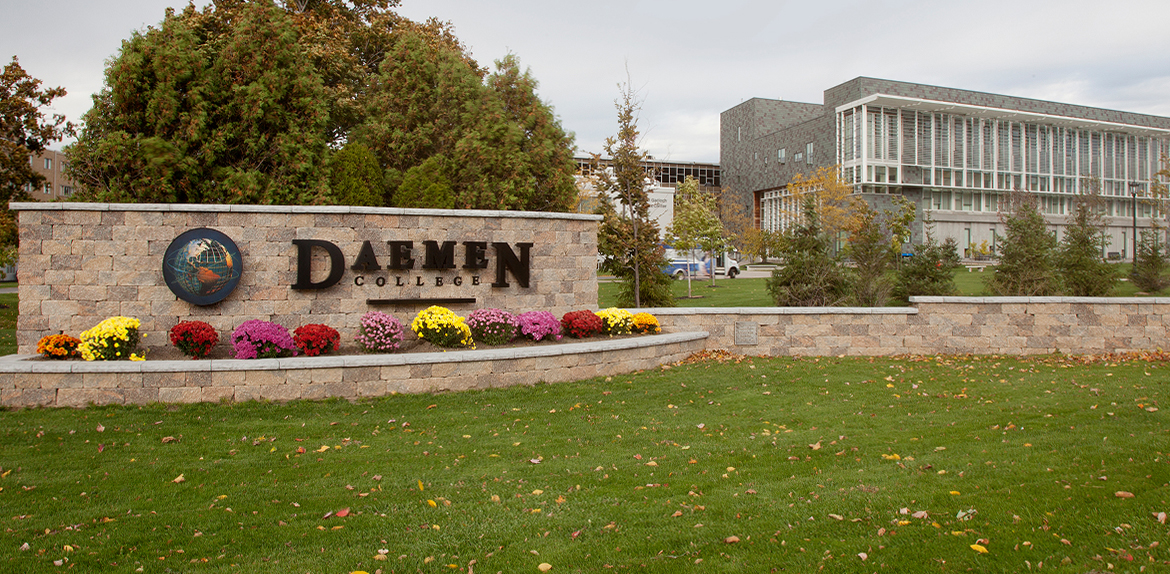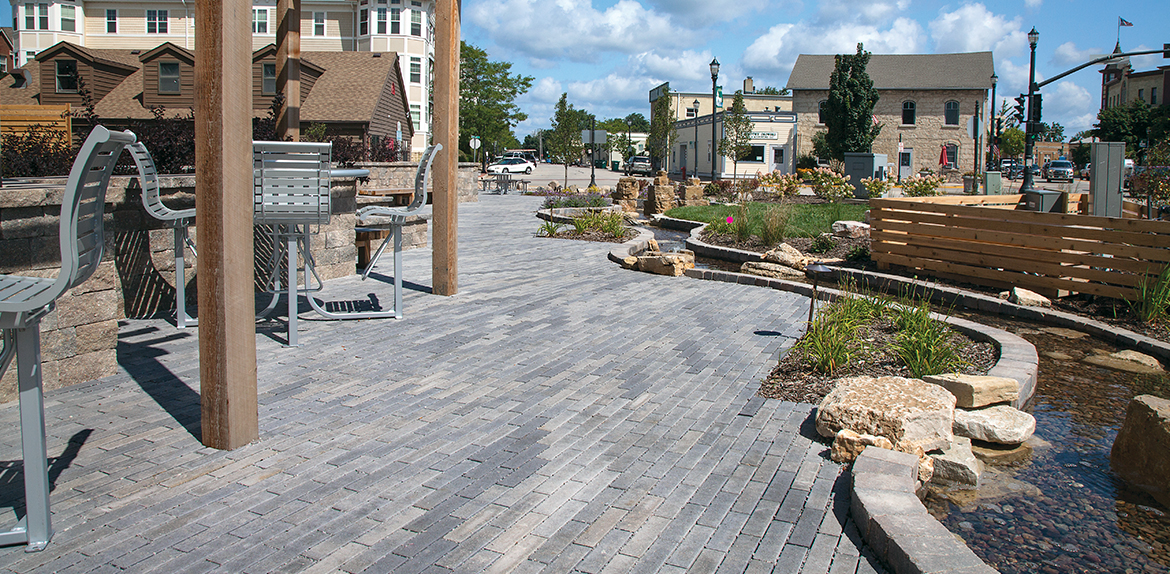The term “biophilic design” has gained favor as a technique of connecting architecture and nature for a truly cohesive effect. Biophilic design refers to the practice of bringing people and nature closer together in the built environment, with the goal of improving the general health and well-being of those who inhabit the space. To create a dynamic and rejuvenating environment, this could involve the use of gardens, natural wood and stone fixtures, as well as fire and water features. This concept is also being articulated in larger commercial design projects, such as the Wellfield Botanical Gardens in Indiana, which blends unique architectural design with the beautiful garden backdrop.
Designing your outdoor space with biophilic concepts in mind may have economic and sustainability benefits, in addition to the obvious environmental and health benefits.
Permeable Pavers

Unilock has designed a variety of paver products that can be used in biophilic designs, with permeable pavers being the most popular.
Unilock was the first company in North America to launch permeable pavers, and we have the largest collection of permeable pavers on the market. Permeable pavers are not only attractive, but they play a vital role in rainwater conservation or stormwater mitigation. They include special spacer bars that allow for a wider spacing between the stones, allowing rainwater to sink into the subsoil or to be captured by a harvesting system and avoid overflowing storm drains. These pavers provide significant benefits when stormwater could be entering combined stormwater systems or nearby waterways.
In addition to the many permeable pavers, Unilock Turfstone grid paving units have a unique latticework design, with very large voids totaling 40% that can be filled with grass or aggregates. These are ideal for erosion control, overflow parking, fire access lanes or low vehicular use areas.
Entanglement Techniques

A common trend in biophilic design is the idea of entangling pavers with the natural environment, allowing the pavement to blend into the lawn or planting beds, giving the impression that flora has gradually broken into hardscape surfaces. We see this popping up is in backyard poolscape projects as well as in urban park projects, where a stepping-stone technique is used by blending large pavers or slabs with grass or turf to create a mosaic pattern that is pleasing to the eye and cool underfoot.
Natural stone outcroppings, such as boulders or native flagstone, are also design forward in commercial and residential projects. Using natural components in combination with precast concrete walls, whether it’s two rocks that bookend, or cutting natural stone to produce a smooth countertop for an outdoor kitchen, adds visual interest to any project.
Biophilia in Vertical Elements

Retaining walls on their own may serve an important function of creating a division of spaces, or as a low seating wall, but retaining walls can be used in tandem with biophilic design to create a truly harmonious space. Garden beds are the most prominent example of mixing biophilic design with vertical elements, as the muted tones of the garden wall allow the flowers, bushes, and other natural aspects to stand out. One commercial project that incorporates vertical elements and biophilic design is Daeman College in Amherst, New York, where Unilock Estate Wall was used to construct a decorative wall with signage to visually spruce up the college grounds. The vertical elements on grassy terrain can be used as low seat walls to create a striking balance of architectural design that still maintains a beautiful sea of green.
Incorporating Water or Fire features

Biophilic design can be anything that is inspired by our connection with nature. For example, a water feature can articulate the sound of free-flowing water, while a fire table or fire pit can provide a warm, cozy atmosphere for curling up at night under the stars.
Grafton Lumberyard Plaza in Grafton, Wisconsin takes several of these elements, permeable paving, entanglement plus the water element which pays homage to the nearby river and history as a mill town in this public plaza. The water meanders through the plaza adding another connection to nature visually and audibly.
Buckingham Fountain in Chicago was inspired by the gardens of Versailles and opened to the public in 1927. The ‘wedding cake’ design and art deco sculptures of the fountain are the crown jewel of Grant Park. In 2008, a restoration project was undertaken to not only repair the fountain to but to meet ADA and stormwater requirements. Unilock Eco-Priora permeable paving was selected to meet these criteria and match the fountain’s original paving color and appearance of crushed granite. Today the fountain puts on an hourly show for visitors and residents.
Determining the biophilic elements comes during the early stages of planning, when you are identifying the theme and the goal of your design. Your Unilock representative can assist you with choosing the right products that can be used to create the look and feel you want to achieve.


